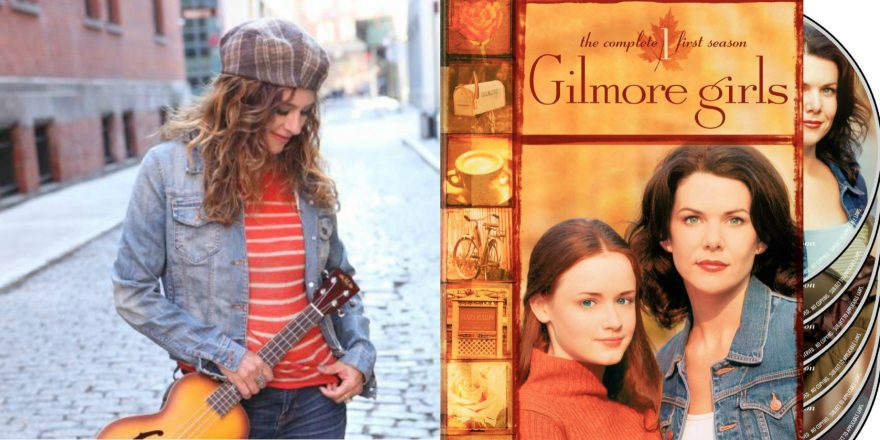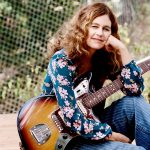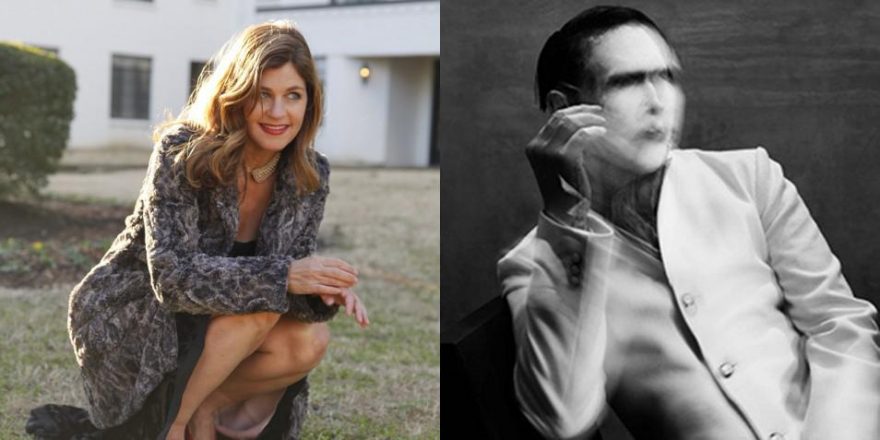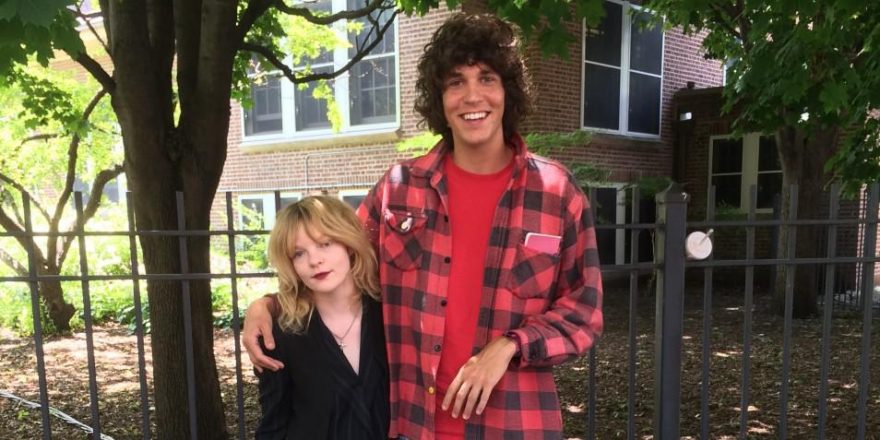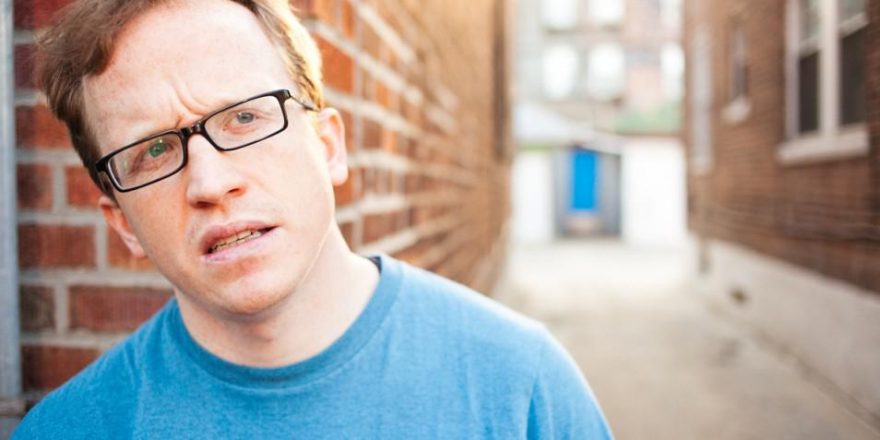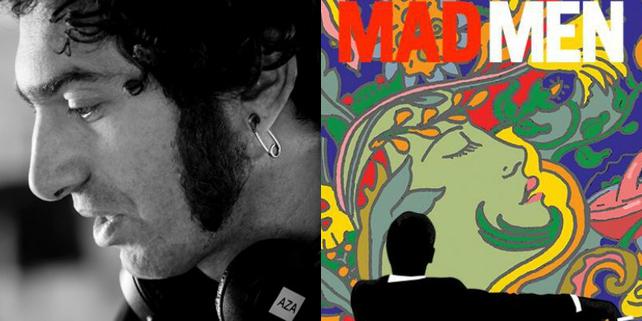It’s always been true that we think we know what the really big moments in life are. Don’t we think we know by looking at the photos we saved from the days we celebrated? Then there are those lucky people who savor the everyday. They internalize seemingly small, uncelebrated moments, and walk around with a universe within. And with a little bit of coaxing, who knows? The internal world could later explode into the Next Big Thing.
At least that’s what happened to Gilmore Girls series creator Amy Sherman-Palladino. It’s reported that she once took a trip to Washington, Connecticut, and stayed at the Mayflower Inn. She took inspiration from the small-town feeling, married that to her love of quick-witted Katherine Hepburn and Spencer Tracy movies, and created the pilot for Gilmore Girls.
And so it was that I came to sing on the Gilmore Girls theme. It was just another day; I was answering the phone and doing my laundry. My not-yet-crawling baby was sitting in the middle of a white sheet covering a flat spiral-roped carpet and playing with a minimalist child-safe object. I was noticing the quiet, looking out the window, standing at the wooden desk by the kitchen, when my mother called. I vented to her about my no-sleep, no-time-to-myself, round-the-clock new role, and shared the latest baby breakthrough: “He holds his own spoon and puts the peas right into his own mouth!”
But soon she came to the part where she told me that a couple she was friendly with, Amy Sherman-Palladino and Dan Palladino, were creating a pilot about a mother and a daughter and thought it would be fitting to have my mother sing one of her songs from Tapestry with her own daughter for the theme. It sounded like an exciting break from my new wake-up-every-four-hours sleep routine, and I said, “It’ll be fun!” She threw in the caveat that in all likelihood, as pilots go, there’s a high chance that it would be a one-off and never see a season. I pitched my then-boyfriend and father of my child, Greg Wells, to produce it, and my mom agreed we could record it at our studio.
“Where You Lead,” the Gilmore Girls theme, was by then already well known by eighty million people and on an album [Tapestry] that was in the top ten for eighty million years. When I was a kid, I did my homework next to my mom while she needlepointed the actual tapestry used on the artwork. She needlepointed, helped me with homework, took me to her yoga classes and wrote songs. The place where she posed for the Tapestry cover was where the clothes in a laundry basket would sit for folding. A philosophical mind might ponder: how many uncelebrated needlepointing moments does it take to internalize a universe that eighty million people could relate to?
For the new recording, the vocal mics were set up in the room that used to be my laundry room. My mom sang, “If you’re out on the road, feeling lonely and so cold” and then she recorded all her chorus melody parts. When it was my turn to go in the laundry room/vocal booth to sing, “All you have to do is call my name and I’ll be there on the next train,” it felt so easy and comfortable, like I could sing it as easily as breathing. Here I was, working with my family, singing in my house in Laurel Canyon, and life was good. I put down my harmonies for, “Where you lead, I will follow, anywhere that you tell me to…”
My mom later confessed she had taken a break from singing “Where You Lead” live because the meaning of the song may have, in the past, been interpreted as a woman singing to a man, and it didn’t have a message in that context that she felt she could get behind as an empowered woman. With the song in the context of Gilmore Girls, it took a positive turn, and now with my mother and I singing to one another, it had a deeper meaning of love between a mother and her child. Its new message was practically a pop music version of the children’s book The Runaway Bunny by Margaret Wise Brown (“If you run away,” said his mother, “I will run after you. For you are my little bunny”).
Which brings me to several confessions and amends. Fourteen years after I sang in my laundry room, I went to an ASCAP (American Society of Composers, Authors and Publishers) party, and standing under the patio heat lamps, found myself talking to a singer who was espousing the merits of legalized marijuana. Another young writer brought up Gilmore Girls. I told them, “Yes, I sang on the theme song.”
“Oh my God! You sing on the Gilmore Girls theme?” she said.
I said, “What?”
She explained that for people in their twenties, Gilmore Girls is the most famous thing ever. I learned from her that my social media skills were wanting; I should be tweeting the world over that I sing on the theme song for a show that accompanied the entire growing-up years of a generation. She told me it should be at the top of my big Brag List.
So, later, I went to YouTube and watched the opening theme for the first time. (Confession #1) Whoa! That’s my voice. So weird. There’s just too much out there to keep up with. How could I know?
A year after that I went to EastWest Studios in Los Angeles for a playback party for the release of a new record by a great band from Ireland, Pugwash. We were listening in the room that the Beach Boys recorded Pet Sounds in. (If you don’t know of Pugwash, do yourself a favor, and go listen to all their songs). The talent level of the people in the room who came to listen to their new album, Play This Intimately (As If Among Friends), was high, and I was trying to keep up.
Among the assemblage, I was introduced to singer-songwriter and producer Sam Phillips, who I’ve always been a massive fan of. Imagine my surprise when Sam Phillips, whose record, Martinis & Bikinis, I was constantly playing the year I moved back to Laurel Canyon from England, told me, “I’ve heard you sing every week of my life for over a decade.”
Really? How’s that?
I then learn that she composed all the music for Gilmore Girls. (Confession #2)
Amends began with Netflix. I was grateful someone in the world of on-demand television had the presence of mind to offer not only all the existing classic seasons to both a new and continuing loyal audience, but to rehire Amy and Dan, the creators, to make four new episodes, and bring back most of the original cast. Because of Netflix, I could time my binges to coincide with my busy life, and I could finally celebrate seven seasons of salt-of-the-earth magical moments brought together in the universe known as Stars Hollow.
And then, like Dorothy in The Wizard of Oz, I clicked my heels together and found myself walking onto the set on the Warner Brothers lot. I was invited, as part of the family tree of the history of Gilmore Girls, to make an appearance on one of the new Netflix episodes. I’m sworn to secrecy about the details. I was grateful to be able to witness Amy’s down-to-earth ease and confidence in the way she leads the actors, camera and crew. It’s not hard to understand why she’s back, why people have so deeply fallen in love with the characters and family themes, and why I can’t wait to see what happens next.
Who knows? I’d love to see both a soundtrack and a tell-all autobiography written by Lorelai’s dog: The Real Paul Anka.



